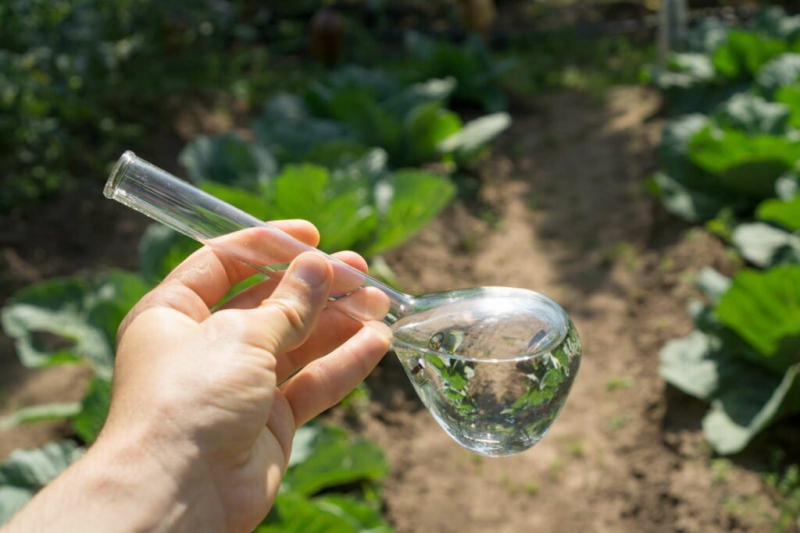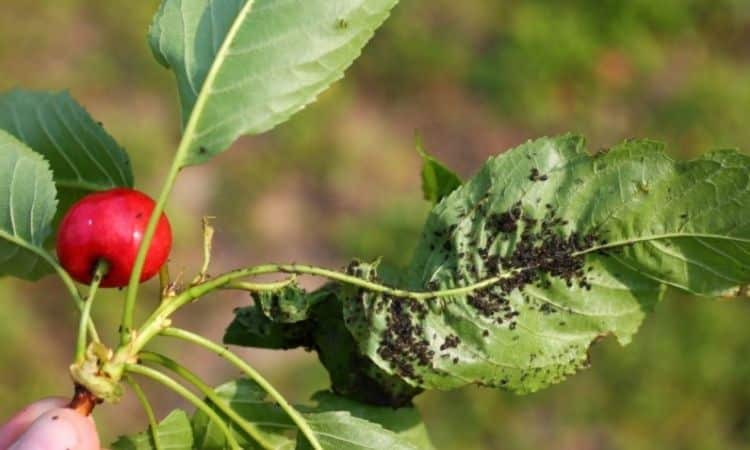Boxwood Pests: Fight Boxwood Moth
As robust as the boxwood may seem, it is usually not spared from pests. We show how to recognize the symptoms and fight the pests.
When you think of the boxwood ( Buxus ), when it comes to pests, the first thing that usually comes to mind is the boxwood moth. Unfortunately, he’s not the only one who likes to mess with our book. We introduce the various pests and show how to combat them successfully.
Boxwood is not only affected by diseases, it can also be attacked by pests. Small animals eat their fill on our plant and usually leave a sad picture. What you can do and who you are dealing with is explained below. You may be interested in Boxwood Fertilizer
Box tree moth
Table of Contents
One reason for eaten up boxwood is often the caterpillars of the boxwood moth (Cydalima perspectalis ), which originally comes from the East Asian region. In this special article on the box tree moth, we will reveal to you how you can identify this pest with certainty.
Box tree moth: symptoms
The voracious caterpillars can be found on the boxwood bushes from mid-March. The butterflies, on the other hand, are rather inconspicuous with their white wings with brown tips, but their offspring are only too happy to attack our boxwood. The up to 5 cm long green caterpillars have sensational black spots and a black head capsule. First, they eat windows in the box leaves, and over time the caterpillars will eat all of the leaves and even shoots. Since they start from inside the bush, the infestation is not noticeable at first. The caterpillars later spin themselves and your beloved boxwood is finally covered in a cobweb-like web.
Tip: Pheromone traps such as the Gardender borer trap are used for the early detection of a borer infestation. In this way, you can take active action against the pest quickly.
Fight the box tree moth
If you regularly take a close look at your boxwood and also take a look inside the shrub, you will hopefully recognize the infestation early, because control is then still possible without any problems. A biological spray is ideal for this. Sometimes there have been sightings that native birds have eaten the bitter caterpillars, but this is usually not enough.

In addition to biological sprays, you can also try manual collection or hosing down the caterpillars with a jet of water, but always use gloves to be on the safe side, as the caterpillars absorb poisons from the boxwood. It is not yet known to what extent these poisons are released by caterpillars. Therefore, you should exercise caution when disposing of the boxwood moth larvae. You can also read more about the successful control of the box tree moth here.
You might so like: The 6 Best Alternatives To Boxwood: Evergreen And Sturdy Substitute
Shoot tip mite on the box
Twisted shoots and leaves are caused by the shoot tip mite (Eriophyes Canestrini ), which belongs to the gall mite family. In contrast to other gall mites, this one does not cause galls and growths, but rather deformations.
Shoot tip mites: symptoms
The shoot tip mites cause deformation of the boxwood shoots by sucking the sap out of the plant cells. As a result, the leaves and shoots of the boxwood cripple, and the leaves remain small, thin, and grow twisted.
Fight shoot tip mites
The shoot tip mites do not pose a serious threat to the box but are more of a visual problem. If you prune your plant regularly, you shouldn’t have much of a problem with these mites. If you find individual shoots with the shoot tip mites, you can also remove them specifically.

A particularly susceptible boxwood variety to these gall mites is ‘Green Mountain’, but there are also varieties that are less sensitive to these mites – these include ‘Herrenhausen’, ‘Faulkner’, ‘Hollandia’ or ‘Handsworthiensis’.
Spider mites on the box
Since the year 2000, a relatively new pest has been found on boxwood in Germany, which originally came from North America: the boxwood spider mite (Eurytetranychus buxi).
Spider mites: symptoms
These small spider mites can barely be recognized with the eyes on the leaves because they are only 0.35 to 0.48 mm in size. The boxwood spider mite can multiply extremely quickly and form up to eight generations per year. The damage caused by these spider mites can be recognized by bright points and short lines that look like commas. This damage occurs when the animals suckle on the plant cells. If the infestation is very strong, all of the leaves become light and in the worst case, the box tree sheds them completely. The mites can multiply best on box trees when they are in sunny and warm locations – but they also occur in shady places, where they only multiply more slowly.

Fight spider mites
These mites are eaten by beneficial insects such as lacewings ( Chrysopidae ) or ladybirds ( Coccinellidae ) and are also washed off the leaves by summer thunderstorms and thus clearly decimated. However, if they are threatened with a severe infestation, you can use oil-based pesticides against the wintering spider mite eggs in autumn or spring. Unfortunately, it was not possible to identify any particular differences in the varieties of this pest in the book varieties.
Boxwood leaf flea on the box
Another sucking pest that can affect the box is the boxwood leaf flea (Psylla buxi). The larvae and the adults are greenish in color and the larvae are from a ball of white wax wool under which they hide.

Boxwood leaf flea: symptoms
But how does the leaf flea infestation show up on the boxwood? The leaf fleas suck on the leaves, excrete sticky honeydew and black sooty fungi then settle on them. In addition, the larvae from their white wax wool coat and protect themselves from enemies and from drying out. By sucking the fleas on the leaves, they become spoon-shaped. The distance between the leaves remains rather short and the shoot tips then resemble small heads of cabbage.
You might so like: Blackbox Gardening: Advantages, Disadvantages, And Procedure
Fight boxwood flea
The leaf flea usually does not affect the box tree much and is also eaten by beneficial insects such as spiders, parasitic wasps, or lacewings. It is helpful to remove infected shoot tips. However, there were striking differences in the varieties, because ‘Blauer Heinz’, ‘Elegantissima’, ‘Angustifolia’ and ‘Herrenhausen’ showed relatively few symptoms, whereas the varieties ‘Pyramidalis’, ‘Green Mound’ or ‘Graham Blandy’ showed very strong symptoms.
Scale insects on the box
Especially with ornamental trees, one has to do it again and again with scale insects or mealybugs. With the box tree, one is particularly often confronted with the comma scale ( Lepidosaphes mi ), which also occurs on fruit trees or rose bushes.
Scale insects: symptoms
The comma scale is about 2 to 3 mm long and colored gray-brown. In contrast to other scale louse species, this species does not form honeydew or soot, but the sucking activities of the comma lice impair the growth of the boxwood. If the infestation is very severe, it will lose its leaves and entire shoots can die off. By shedding the leaves, you can quickly confuse these symptoms with those of boxwood leaf fall, but here you can easily see the lice sitting on the shoots.

Fight scale insects
Since the lice cannot spread very quickly on the boxwood, only individual branches are often affected. These can easily be removed by cutting back. However, if the infestation is very large and pruning is no longer effective, you can treat the plant with oily spray sprays shortly after the lice hatch in May or June. Be careful not to act too late, however, because once the lice’s shields harden, they are no longer very susceptible to treatment.
Boxwood gnat on the box
Especially in Central Europe regional (southern Germany and Austria ), one has to struggle with the boxwood gall mosquito (Monarthropalpus flavus) and this small insect can cause a lot of damage.
Boxwood gnat: symptoms
Approximately 30 eggs are laid directly in the leaves for each female that dies after oviposition. Small larvae then develop from these eggs and eat burrows in the boxwood leaves. These tunnels, also known as mines, can easily be overlooked at the beginning of the infestation as they only appear as bright spots on the leaves. Later in summer, the tissue thickens and light brown spots appear on the upper side of the leaf, which is not very clearly delineated from the healthy tissue. Galls form on the underside of the leaf, in which the orange larvae are located, and leaf shedding can also occur. Exactly these galls with the larvae in them are a good distinguishing feature to the fungus of the boxwood leaf fall.

Fight the boxwood gnat
Usually, the gall midges tend to haunt older plants and this usually does not cause much damage. However, cutting measures can reduce the infestation pressure, and if the infestation is very severe, you can control the larvae with insecticides such as Calypso after they hatch. Here, too, a difference can be seen in the different varieties, since ‘Handsworthiensis’, ‘Angustifolia’, ‘Herrenhausen’, ‘Faulkner’, ‘Rotundifolia’ and ‘Suffruticosa’ are less plagued by the boxwood gall mosquito. On the other hand, the variety ‘Green Mound’ from Canada is particularly heavily attacked by this gall mosquito.
A summary of important pests on the boxwood
- Box tree moth (Cydalima perspectalis)
- Shoot tip mite (Eriophyes Canestrini)
- Boxwood spider mite (Eurytetranychus buxi)
- Boxwood flea (Psylla buxi)
- Scale insects ( Lepidosaphes ulmi )
- Boxwood gnat (Monarthropalpus flavus)
Boxwood damage: frost damage, sunburn, etc.
But not only pests and pathogens can affect your beloved evergreen boxwood. Environmental conditions can also be responsible for damage and the loss of rich green. These are so-called abiotic causes of damage, as they are not caused by living organisms. The following abiotic damage can occur on the box tree:
- Freezing and frost damage to leaves and roots
- Frost dryness
- Snow break
- sunburn
- Salt damage

In our special article, you can find out how you can recognize such boxwood damage caused by environmental effects and differentiate it from pests and what you should do to limit the damage.






